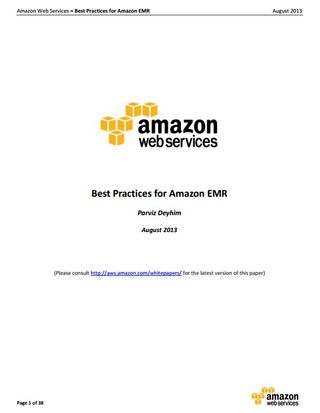AWS News Blog
New Whitepaper: Amazon Elastic MapReduce (EMR) Best Practices
|
|

When analyzing massive amounts of data, the issue encompasses more challenges than simply data processing and computing. One has to make several decisions regarding how to collect and aggregate data, how to move data or point the data source to the cloud, how to compress the data and finally how to process the data faster and more cost-effectively.
In that regard, we are very excited to release the Best Practices For Amazon EMR whitepaper today. This whitepaper highlights the best practices of moving data to AWS, collecting, aggregating and compressing the data, and discusses common architectural patterns for setting up and configuring Amazon EMR clusters for faster processing. We also discuss several performance and cost optimization techniques so you can process and analyze massive amounts of data at high throughput and low cost in a reliable manner.
As always we would love to get your feedback. Please feel free to use the comments below to leave feedback so we can improve our products, features and documentation. Thanks!
